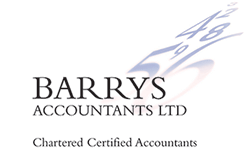Income shifting - a tax trap
The tax affairs of Harry Potter star Rupert Grint were again the focus of a dispute with HMRC. The First-tier Tribunal (FTT) had to decide if the transfer of his personal right to income to a company he owned was tax avoidance. How did the FTT rule?

Sale of personal income
The case of Rupert Grint and The Commissioners for HMRC (2024) (R and HMRC) involves the tricky anti-avoidance rules designed to prevent individuals from selling their right to earnings. The rules can apply if, in the words of the legislation, the sale is to “ exploit the earning capacity of an individual” where “the main object or one of the main objects is the avoidance or reduction of liability to income tax” . R’s occupation was acting and the alleged avoidance involved a lump sum payment to him by a company he owned in exchange for it being entitled to his future earnings.
Background
In 2001 R started acting in the Harry Potter films earning substantial sums. In 2011 R formed a company, Clay 10 Ltd (C). It contracted with film producers to provide R’s services in future acting roles. In return for the rights to income, personal goodwill associated with R’s name, C paid R £8.5m. Significantly, there were two elements to the payment. A little over £4m paid for the right to income accrued from R’s acting and £4.5m for income from future acting.
Disputed self-assessment
In his 2011/12 tax return R declared the £4m as income and the £4.5m as a capital gain. R claimed entrepreneurs’ relief (now called business asset disposal relief). The effect of this was to reduce the tax rate from a potential 45% (income tax), plus corresponding NI, to just 10% CGT. HMRC started an enquiry into R’s tax return and determined that the sale of occupation income rules applied. It amended R’s tax return to include additional income of £4.5m in place of the reported capital gain. Naturally R appealed.
R’s argument
R, or rather his accountant, argued that the anti-avoidance rules didn’t apply. The main objective was not income tax avoidance. Evidence presented to the First-tier Tribunal (FTT) said the main reason for the arrangement was the protection a company offered due to certain allegations suggesting exploitation of R’s income by family members. Additionally, R said that HMRC’s determination was technically incorrect as it cited the wrong legislation.
FTT’s ruling
While the judges accepted that operating through a company gave the taxpayer the benefit of limited liability protection, they took the view that the “most important object” was to reduce R’s tax bill. Therefore, the arrangement was tax avoidance in the letter of the law. The judges also agreed with R that HMRC had erred by citing the wrong legislation in its determination. Despite this they ruled that it was valid.
Although the transfer of the right of future income from an individual to a company in which they own shares is common, it’s rare for HMRC to resort to the anti-avoidance rules. We’ve seen a few such cases but HMRC backed down when presented with other reasons for wanting to transfer future earning capacity to a company. Therefore, be prepared to provide non-tax avoidance reasons if challenged.
Related Topics
-
Travel expenses - exempt or not?
You have several employees who travel from home or their workplace in the course of doing their job. Naturally, you meet the cost of their travel but should you be deducting tax and NI from the payments, or are they exempt?
-
Lending to a relative - avoiding the tax trap
Your daughter needs financial help to get her company started. You’ve agreed that your company will lend her the money. Your accountant says that this will trigger a tax charge. What is the charge and how can you legitimately dodge it?
-
Further relaxation of self-assessment thresholds announced
The government has announced changes to the threshold at which some taxpayers need to complete a tax return. What’s the full story?



 This website uses both its own and third-party cookies to analyze our services and navigation on our website in order to improve its contents (analytical purposes: measure visits and sources of web traffic). The legal basis is the consent of the user, except in the case of basic cookies, which are essential to navigate this website.
This website uses both its own and third-party cookies to analyze our services and navigation on our website in order to improve its contents (analytical purposes: measure visits and sources of web traffic). The legal basis is the consent of the user, except in the case of basic cookies, which are essential to navigate this website.